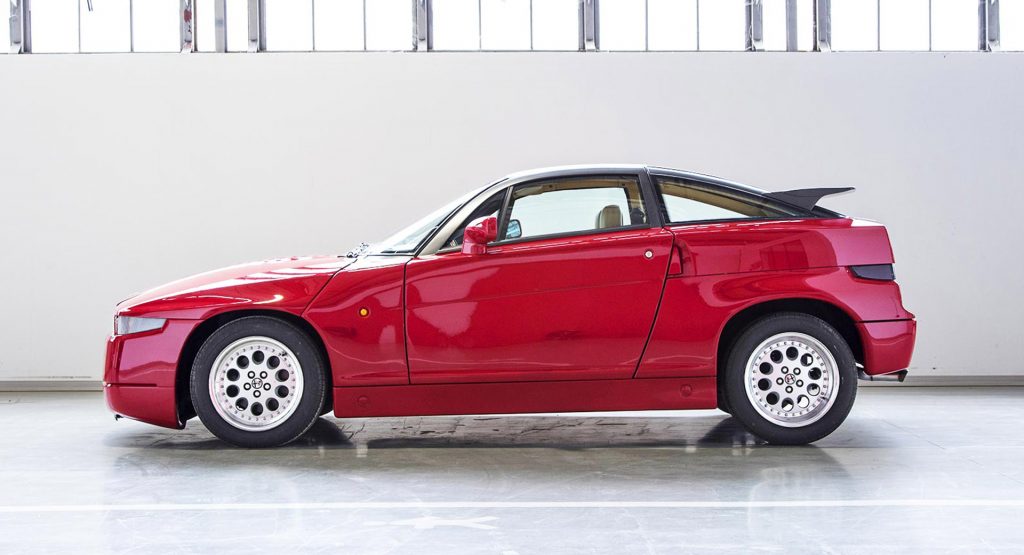FCA Classiche has restored one of the most interesting Alfa Romeo models ever made, the 1989 SZ also known as “Il Mostro”.
This particular example is an ex-works car from the Balocco test circuit and was also used for the early photo shoots of the car. There are a few key differences between this car and the production model, such as a wood-rimmed steering wheel, and gauges that feature white dials instead of the production model’s black.
The SZ was completely disassembled, stripped of all composite bodywork, and restored back to showroom fresh. The interior was also revitalized, bringing life back to the tan leather seats.
It doesn’t appear that the engine was refreshed, but it’s possible that the 3.0-liter V6 was already sweet as a peach, and producing all 210 horsepower and 181 lb-ft of torque that it left the factory with.
The polarizing styling was due to the brand’s early use of CAD/CAM modeling, and earned it the nickname Il Mostro, or “The Monster”. Despite the blocky looks, it managed to have an extremely low drag coefficient for the era.
Although the vehicle was named the SZ or Sprint Zagato, it wasn’t actually designed by the famed coachbuilder, it was an in-house design completed by Robert Opron at Alfa Romeo‘s own Centro Stile (style center).
The name was instead a reference to the original Giulietta SZ of the early 1960s. Zagato was responsible for the production of the vehicle, however. A total of 1,036 SZs were built between 1989 and 1991, all of them were painted in Rosso Alfa 130 red with a Grigio Scuro 633 black roof. There was also a drop-top version called the RZ, of which only 278 were produced.
FCA Classiche in Turin began in 2015 and handles the complete restoration and certification of models from brands such as Alfa Romeo, Fiat, Lancia, and Abarth.
After taking a brief pause for the COVID-19 pandemic, the experts are back to work bringing customer cars and heritage vehicles back to life.







